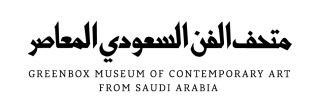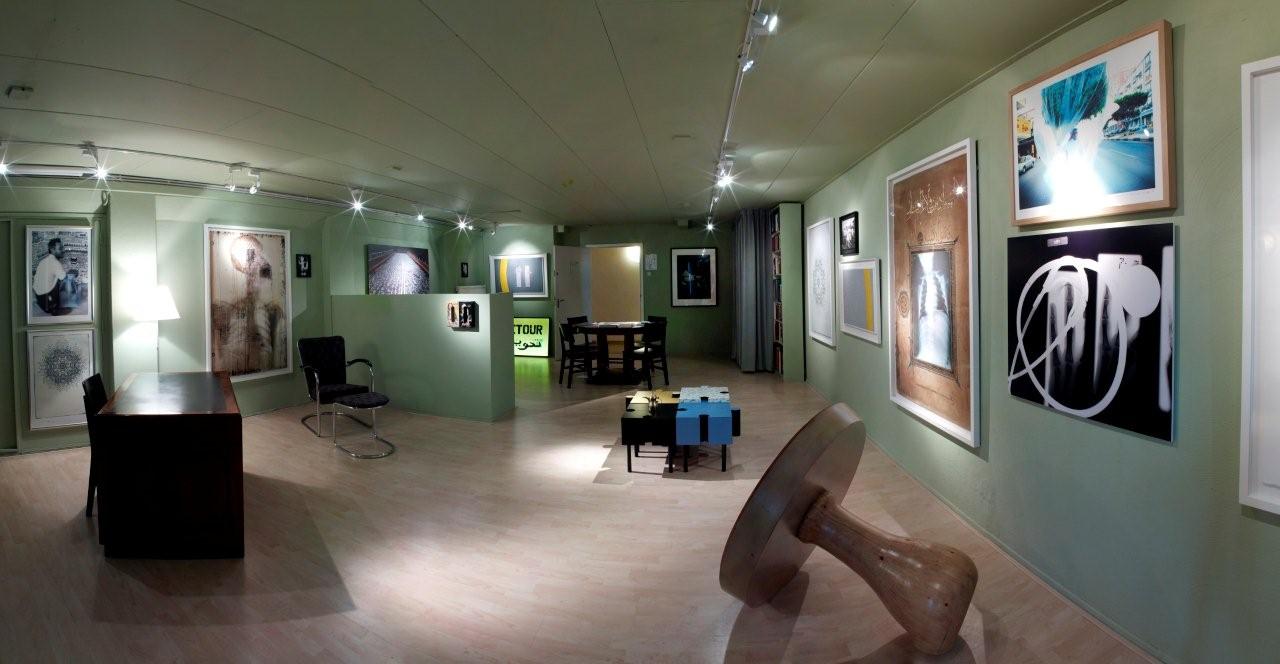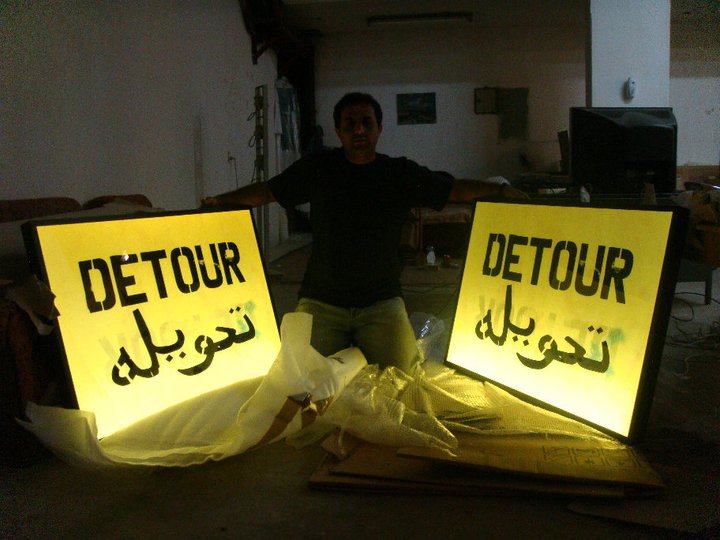 Elke woensdag staat er met de Curator’s Choice een ander museum in de spotlight. Één van de conservatoren van het betreffende museum zal vertellen over het museum, zichzelf en een bijzonder werk uit de collectie van het museum. De Curator’s Choice van deze week is van de heer Helb van het Greenbox Museum of Contemporary Art from Saudi Arabia te Amsterdam. | Every Wednesday another museum takes the spotlight with the Curator’s Choice. One of the museums Curators will write about the museum, him/her self and an extraordinary work in the museum’s collection. This week’s Curator’s Choice is from mr. Helb from the Greenbox Museum of Contemporary Art from Saudi Arabia in Amsterdam. The English version of the text can be found directly after the Dutch version.
Elke woensdag staat er met de Curator’s Choice een ander museum in de spotlight. Één van de conservatoren van het betreffende museum zal vertellen over het museum, zichzelf en een bijzonder werk uit de collectie van het museum. De Curator’s Choice van deze week is van de heer Helb van het Greenbox Museum of Contemporary Art from Saudi Arabia te Amsterdam. | Every Wednesday another museum takes the spotlight with the Curator’s Choice. One of the museums Curators will write about the museum, him/her self and an extraordinary work in the museum’s collection. This week’s Curator’s Choice is from mr. Helb from the Greenbox Museum of Contemporary Art from Saudi Arabia in Amsterdam. The English version of the text can be found directly after the Dutch version.
Een broodje etend op het Leidseplein met een boek over Saoedi-Arabië op mijn schoot, overkomt het me soms. Een tafelruimer of een keukenhulp met wortels in Pakistan of Turkije wijst op het boek en knoopt een gesprek met me aan. Over grootouders die de hadj, de pelgrimstocht naar Mekka, hebben gemaakt of van plan zijn dat binnenkort te doen. Ooit willen ze zelf de reis maken, maar de meisjes en Ajax hebben nog voorrang. Mijn interesse voor kunstenaars uit Saoedi-Arabië, heeft te maken met de rol die het land heeft als beheerder van Mekka, waarmee het deel is van Nederland, zoals het vroeger deel was van Nederlands-Indië en nog steeds van Indonesië is.
Kunst heeft alles te maken met de richting waarin wij kijken. De verbindende kracht van het schilderij van Mohammed, waarin Mekka centraal staat, wordt onder invloed van de gewenste opvatting in Nederland, dat de islam divers is zoals de mensheid, wel eens vergeten. Aandacht hebben wij liever voor Marokkaans breien en Turks klompendansen, maar dat gaat hieraan voorbij dat door de eeuwen heen van Tanger in Marokko tot Port Darwin in Australië moslims leren lezen en, soms met een Arabisch doek op het hoofd, op zoek gaan naar de fundamentele waarden en vroegste geschiedenis van hun cultuur en die in Saoedi-Arabië denken te vinden. Het beeld dat wij daarvan hebben is niet altijd positief en sinds 9/11 vermoeden veel mensen zelfs het bestaan van een draak die we, merkwaardigerwijs, driftig in Afghanistan en Limburg op de staart slaan. Het is de functie van sprookjes en de beeldende kunst om zo’n draak niet te slaan maar in het gezicht te kijken en daarom is er aan het Amsterdamse Leidseplein het bescheiden Greenbox Museum of Contemporary Art from Saudi Arabia. Het verzamelt hedendaagse kunst die is gemaakt door mensen die in Saoedi-Arabië wonen en werken en, zo gezegd, op de kleuterschool hebben gezeten met de jonge mannen die meenden dat er in hun omgeving redenen dringend genoeg waren om zich in New York te pletter te vliegen.
Abdulnasser Gharem is zo’n kunstenaar en bovendien degene die zich zonder omhaal op dat lastige onderwerp heeft gestort en de autoriteiten, van wie sommigen dachten dat kunst er alleen is om het beeld van Saoedi-Arabië te versieren, met zijn directheid wel eens op het verkeerde been heeft gezet. Voor dit blog selecteerde ik het meest heldere van zijn werken in mijn collectie. Detour uit 2009 verwijst in het Arabisch en het Engels naar de verkeersborden in Saoedi-Arabië, die de vele omleidingen en roadblocks begeleiden. Gharem, die behalve kunstenaar, ook luitenant-kolonel is in het leger, gelooft niet dat wij kunnen vertrouwen op de veiligheidsmaatregelen en betonnen afscheidingen die sinds 9/11 het landschap van zijn land en onze vliegvelden bepalen. De omweg die wij moeten nemen, zit in de richting van het denken, impliceert het bord dat hij zelf heeft gemaakt. Het is een lichtbak die in een serie van acht inmiddels over de wereld verspreid is geraakt. Saoediërs, die minder aan beeldende kunst gewend zijn dan wij, vroegen hem eens of hij niet beter ingezonden brieven in de krant kon schrijven. De kans echter dat de Nederlandse lezer van dit blog dan kennis had genomen van de mening van een overste die bij de grens tussen Saoedi-Arabië en Jemen de wacht houdt, was dan niet zo groot geweest. Mijn hoop is dat het werk de lezer uitnodigt om zelf eens een omweg te maken die hem langs het Leidseplein voert naar wat kunstenaars in het hart van de islamitische wereld denken en maken.
Aarnout Helb, Conservator/Eigenaar Greenbox Museum
Aarnout Helb, curator of the Greenbox Museum wrote the following text for Curator’s Choice
When I’m eating a sandwich on the Leidseplein (Amsterdam) with a book about Saudi Arabia in my lap, it sometimes happens to me that a waiter or kitchen help with roots in Pakistan or Turkey points to the book and starts a conversation with me. They tell me about their grandparents who made the hajj, the pilgrimage to Mecca, or that they are about to go there soon. Someday they want to make this journey themselves, but for now girls and Ajax still have priority. My personal interest for artists from Saudi Arabia had to do with the role that the country has as ‘keeper’ of Mecca, through which it is a part of the Netherlands as it used to be a part of the Dutch East Indies and that it still is a part of Indonesia. Art has everything to do with the direction in which we look. The unifying force of the painting of Mohammed, in which Mecca plays a central role, is sometimes disregarded in the Netherlands where the ‘desired’ view is that Islam is as diverse as humanity. We rather pay attention to Moroccan knitting or Turkish clogging, which ignores that Muslims from every part of the world search for the fundamental values and the earliest history of their culture. This, they hope to find in Saudi Arabia.
The opinion we have about this, is not always positive. And since 9/11 many people even suspect the existence of a ‘dragon’ that we, surprisingly, hope to beat at it’s tail in Afghanistan and Limburg. The function of fairytales and the visual arts is not to hit this dragon but to look it in the face. And that is why the modest Greenbox Museum of Contemporary Art from Saudi- Arabia exists at the Leidseplein in Amsterdam. There is a collection of contemporary art on display made by people who live and work in Saudi- Arabia and even, so to speak, have been to kindergarten with the young men who felt that there were reasons in their surroundings of such urgency, that they believed it was necessary to fly themselves to death in New York.
Abdulnasser Gharem is one of those artists. Moreover, he is the one who unceremoniously focused on this difficult subject and the one who distracted the authorities (some of whom thought that art exists merely to embellish the Saudi- Arabian image) several times with his directness. For this Artblog I selected Gharems most direct works in my collection. The artwork Detour from 2009 refers in both Arabic and English to the traffic signs in Saudi- Arabia, that accompany the many detours and roadblocks. Gharem, who is not only an artist but also a lieutenant-colonel in the army, doesn’t believe we can trust the safety measures and concrete walls that define the landscape of his country and our airports since 9/11.
The detour that we have to take, lies in our way of thinking, implies the sign that he made himself. Detour is a lightbox made in a series of eight and has since it’s creation spread out over the world. Saudis, who are less used to visual art in the way we are, asked Gharem once whether it wasn’t better for him to sent letters to the paper. The chance that the readers of this Artblog would come into contact with the opinion of a lieutenant-colonel at the border patrol between Saudi-Arabia and Jemen, would have been non existent if he did that. I just hope that this artwork invites the readers to make a detour that will lead to the Leidseplein, to see the works of art that express the opinions from artists in the heart of the Islamic world.
Lees ook:De 10 populairste musea volgens Facebook
Lees ook:Greenbox Museum krijgt concurrentie vanuit de VS
Lees ook:Nederlands museum populairder dan Louvre
Lees ook:Aankondiging: Curator’s Choice
Lees ook:Israelisch museum omarmt Arabische kunst


